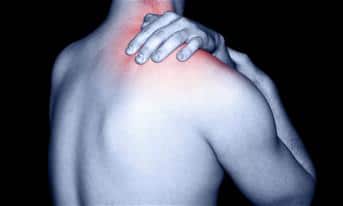
Rotator Cuff Syndrome: The Truth
When asked what I treat the most these days, most assume the answer will be neck and/or lower back pain. Although that was likely true about 5 years ago, I have to say that these days, shoulder injuries rank right up there. But today, we want to talk to you about what some call the “Rotator Cuff Syndrome.”
“Rotator Cuff Syndrome”—a blanket term for a variety of different conditions in the shoulder involving the rotator cuff—has been and continues to be on the rise among our entire population, but especially among the “active” 40+ year old male population.
This is due primarily to that fact that most of us have “less than perfect” posture and the fact that this specific population has likely been engaged in weight lifting or athletics that involve overhead movements. (For several years, if not their entire life.)
Proper biomechanics of the shoulder is greatly dependent upon a balanced rotator cuff. Your shoulder is a “ball and socket” joint, like your hip. But unlike your hip, which has a deep “socket” for the “ball” to fit nice and snug into, the shoulders “socket” is quite shallow. This is great as it allows the shoulder joint to have an impressive range of motion, but not so great as it leaves the shoulder vulnerable to imbalance and ultimately injury.
In my office, the two most common presentations associated with shoulder pain are impingement syndrome and general myofascial shoulder pain, although the two often times present at the same time.
The first, impingement syndrome results when the “ball” rides high in the “socket”. The ball pinches (or impinges) the supraspinatus tendon against the “socket,” usually when the arm is raised over head. (If you have felt a pinch in the front of your shoulder while doing military presses in the gym…you have impingement syndrome.)
One of the primary reasons this occurs is that two of the rotator cuff muscles are not doing their job. These muscles (located in the back of the shoulder) should depress the “ball” when you lift your arm, keeping it (the ball) from hitting the socket, and impinging the tendon. Why are they not doing their job you ask?
Typically, they have become so inhibited (weak and stretched out due to poor posture) that they are completely unaware of their responsibility. One of the things that often presents with an inhibited muscle are “trigger points.” These hyper-irritable spots in the fascia surrounding skeletal muscle can render the muscle incapable of performing its job. They can also be quite painful, often times causing a deep ache or throb in the shoulder. This describes the second most common pain presentation, myofascial pain.
Here is the take away…First, if you experience pain in the front of your shoulder while doing any overhead movements at the gym, stop and get it checked out as most of the time this will lead to trouble sooner rather than later. Second, if you experience pain in the back of your shoulder (can also be a generalized ache or throb) with laying on it (such as when you are sleeping), get it checked out.
Here is the good news,…Most of the time (even in the presence of other structural issues such as a labral tear or osteoarthritis), these conditions respond really well to conservative care. By removing trigger points, balancing the rotator cuff and improving posture, the shoulder can once again be pain free. Throwing a football, lifting weights and even lying on your favorite side to sleep can once again be a normal part of life. Contact us today to learn more.